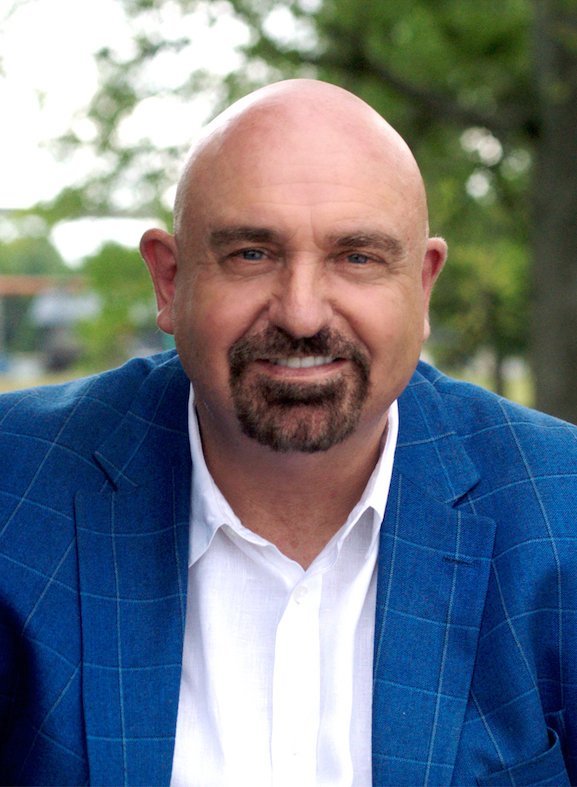A Snapshot of Home Financing Trends
Posted by Gary Ashton on Friday, September 27th, 2019 at 9:43am.
 Financing a home with a long-term mortgage is the most common way to buy a home in America, but a surprisingly large percentage of homeowners own their homes outright. Interest rates seesaw up and down, and home prices tend to appreciate over time. As long as owners are able to make the required monthly payments, all seems okay. But how has this system evolved over the years?
Financing a home with a long-term mortgage is the most common way to buy a home in America, but a surprisingly large percentage of homeowners own their homes outright. Interest rates seesaw up and down, and home prices tend to appreciate over time. As long as owners are able to make the required monthly payments, all seems okay. But how has this system evolved over the years?
In decades past, prospective buyers who couldn't pay cash for a home commonly saved for a 50 percent down payment, and then secured a loan for the balance, with a balloon payment due anywhere from one to five years later.
Between 1931 and 1935, during the Great Depression, a quarter of a million people lost their homes each year. Then President Roosevelt stepped in to stabilize the economy. The mortgage term was lengthened, with the effect of making homes more affordable for greater numbers of buyers, and many of the federal agencies that were established then still exist today.
They helped lower required down payments, regulate interest rates and offered protection to lenders who offered long-term mortgages. In effect, they "wrote the rules" for home borrowing, and those government guidelines still exist today. In the 1940s, the maximum term for a home mortgage was extended to 30 years, making homes truly affordable for the first time for large numbers of buyers. Owning a home was viewed as the American Dream, and the typical buyer saved for a down payment, secured a 30-year mortgage, and eventually had a "mortgage-burning" celebration.
Things have come a long way in the past 70 years.
Times Have Changed
Today, around 58 percent of homeowners are paying a mortgage. Of the remainder, six percent never had a mortgage, and 36 percent live in a home that is fully paid off. There are regional differences (so numbers for the Nashville area may be different), but they are slight; the Northeast boasts the highest percentage of homes with no mortgage, but it is still only 40 percent. There are also household and generational variations. Single owners are more likely to have "burned" a mortgage than families, 45 compared to 29 percent. Slightly more than half of Silent Generation homeowners, those between the ages of 65 and 75, 53 percent, own their homes free and clear.
To obtain the comprehensive data used for a recent study, released in October 2016, more than 13,000 individuals were surveyed—buyers, sellers, long-term homeowners, past-year renters and long-term renters—in order to gain a better understanding of contemporary real estate drivers.
The report states that purchasing a home is a huge milestone that can be emotionally daunting for Millennials. Half of home buyers in the U.S. are under 36, meaning this group is playing a large part in shaping the future of real estate. While they show some hesitance to buy for multiple reasons, the findings show this generation shares the dream of owning a home some day.
Financing in an Uncertain Economy
However, the report also concludes that as important home ownership is as a "vehicle for wealth in the U.S.," it is also a financial burden.
Since the housing crisis and resulting recession of 2008, a Forbes article published in January 2015, cites data firm CoreLogic statistics, noting that in the previous 12 months, "residences in some state of foreclosure comprised 1.5 percent of all homes with a mortgage," said to be the lowest since 2008. Based on data supplied by RealtyTrac, a competing data firm, approximately 5.5 million homes have been foreclosed on by lenders since the recent recession began in 2008.
Until the housing bubble precipitated a national crisis, owning a home had become easy for large numbers of Americans. Home ownership reached an all-time high in 2004. Then the economic realities forced a tightening of credit, and a huge number of Americans were affected—home ownership seemed an impossible dream for younger Americans. Even unprecedented low interest rates did not spur a quick turnaround in the market.
Foreclosures and short sales changed the financing picture as well. Even though demand was high, obtaining credit became difficult and buyers were wary. Add to that the number of older, dated homes on the market that needed improvement, and it's not difficult to understand why the market has been sluggish. Home ownership last year dipped to its lowest percentage in almost 50 years.
Today, the picture is interesting:
- More than half of buyers purchase homes that require updating
- Sixty-two percent of the buyers who update and make repairs prefer to do the work themselves
- Of those homeowners who hold mortgages, 43 percent report that they have refinanced their mortgage at least once
Refinancing Realities
Those who choose to refinance do so for a variety of reasons, primarily to lower the interest rate, followed by a desire to reduce the monthly payment or to substitute a shorter term for a long note. A relatively small group, 14 percent, has refinanced more than once; of that group, nearly 20 percent are aged 50 and older, followed by the Silent Generation and Baby Boomers, at 18 and 17 percent respectively.
Of those who have refinanced, 63 percent did so within the last five years; of prospective sellers who have refinanced, the percentage climbs to 75. Within the group of owners who have refinanced, Millennials have come late to the table, within the past year, while Silent Generaton and Baby Boomer owners are the groups more likely to have refinanced or restructured a loan six or more years ago.
Nearly half of the refinancing owners did so with their current financial institutions. Of those who sought new lenders, just over one quarter relied on advice from friends, family, neighbors and colleagues, sought a referral from a real estate agent or used a real estate website or app.
Important factors for lender selection include the lowest interest rates and favorable terms, but past personal experience is also termed critical by 50 percent of these refinancing homeowners.
Millennials, on average, once again differ from other generations: They are less focused on the lowest rate, and place more value on the specific mortgage product. These younger, savvy homeowners also appreciate convenience (with a location near them), already having an account, and doing business with a local institution.
What These Financing Trends Mean for You
If you're a home buyer looking to get a new mortgage, you'll definitely need to keep an eye on interest rate fluctuations. Rates used to remain steady for years, but today's trend is for rates to change rapidly over the course of a few months. The trend towards older homes in need of repair filling up the market also means that polishing your DIY skills or finding a reliable contractor becomes a must for the new homeowner. Finally, be prepared to build as much financial health as possible by paying down debts and raising your credit score since lenders are setting higher requirements for mortgages than they did just 10 to 15 years ago.
Home ownership and the economy have always been interrelated. Now, with economic recovery and a new administration in Washington, the future of home financing in the immediate future is still a bit difficult to predict.

Gary Ashton
The Ashton Real Estate Group of RE/MAX Advantage
The #1 RE/MAX team in the World!
